Acquiring customers from social media channels has become easier in the last few years. Initially, a business’s presence on social media was beneficial mainly for branding and customer service. However, social media channels increasingly offer ways to get in front of prospects, to generate leads and sales.
In this article, I’ll describe three ways to acquire customers using social media.
1. Advertise on Facebook, Instagram, Pinterest
“Pay to play” has been the norm in social media for some time, especially on Facebook. That’s not to say brand awareness and customer service are any less important. However, unlike an email program or an organic search strategy, which can take time to build, social media ads help businesses reach new prospects quickly.
To decide where to advertise, research which social platforms your customers are most engaged with. You can choose first-party platforms — i.e., advertising directly on the social media site — or third-party software, which can disperse advertising campaigns across multiple sites.
For this article, I’ll cover three popular first-party platforms — Facebook, Instagram, and Pinterest — as they are common options for smaller businesses.
Facebook. The Facebook Ads platform is robust, with many capabilities. Thanks to a refresh to its interface, it’s also relatively user friendly. Even the most novice user can quickly get ads up and running.
To get started, Facebook first asks advertisers to define their objectives. For acquiring new individual consumers, choosing “Traffic” and “Conversions” would be suitable. For B2B advertisers, however, the “Lead generation” objective would likely be of interest.

Facebook marketing objective options. The “Traffic” consideration with “Conversions” would likely be best for B2C sites. For B2B sites, “Lead generation” may appeal.
When attempting to acquire customers, measure the effectiveness of your ads by creating a Facebook conversion pixel. When a user converts after clicking your ad, the conversion pixel reflects this in the reporting. In addition, when setting up an ad campaign, choose “Optimize for Conversions.” With this option, Facebook will show your ads to users who are most likely to purchase.
Ads promoting specific products are useful, even to users who have not visited your site. But for users who have visited your site, but did not convert, consider remarketing ads. For instance, a user may add an item to cart but end the session without buying.
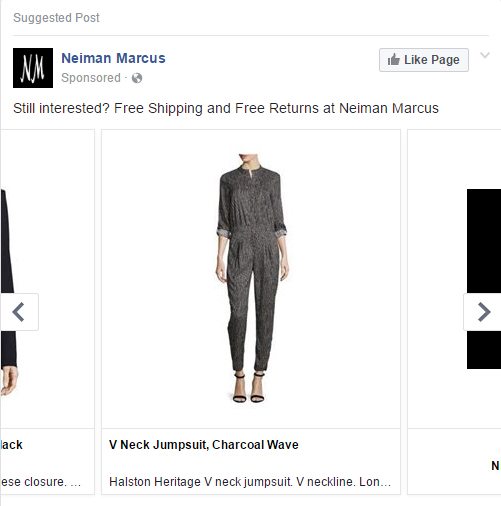
This Neiman Marcus remarketing ad on Facebook targets users that visited Neman Marcus’s website without completing a purchase.
Once the user subsequently visits Facebook, a remarketing ad — such as the one above from Neiman Marcus — can entice the user to complete her purchase.
Similarly, you can also upload customer email addresses and other data to create lookalike audiences, which closely resemble the attributes of those customers. You simply select the size and target country of the audience you want to target. The more customers you provide, the more users Facebook claims it will be able to target.
Instagram. With Facebook’s acquisition of Instagram in 2012, placing ads on Instagram requires at least a Facebook page. Instagram advertisers don’t need an Instagram account, but I suggest it nonetheless.
Advertisers can use the same level of targeting on Instagram as on Facebook, namely demographics, location, interests, and actions. Moreover, marketing objectives for acquiring new customers are similar, too — traffic and conversions.
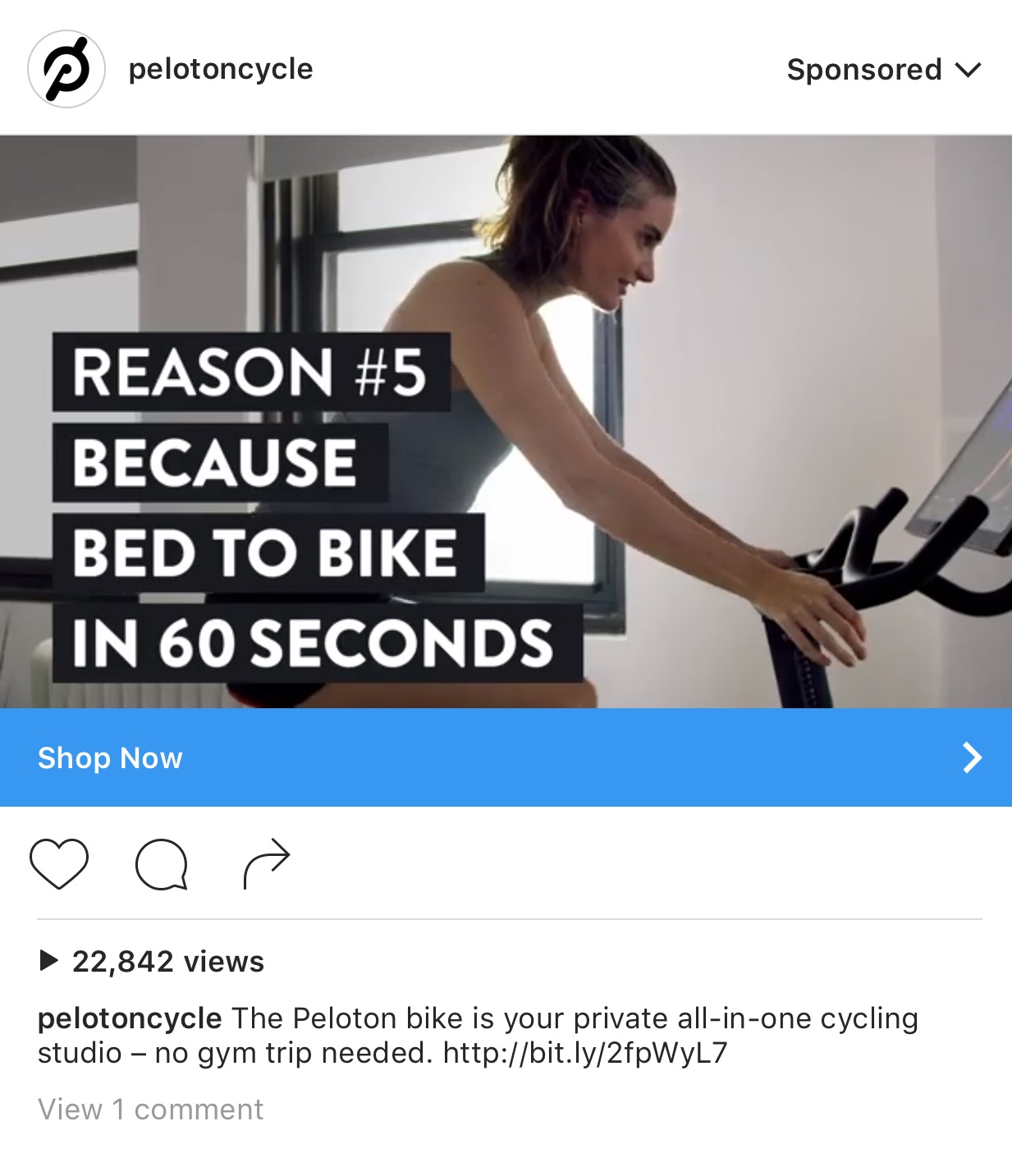
Example of an Instagram ad by Peloton Cycle.
In addition, Instagram recently launched the option to include links within Stories. Many observers view this as a Snapchat copy. But it could help Instagram attract businesses. Currently the option is free. But it’s available only to verified accounts during the initial rollout. Utilizing this new feature during the holidays could help retailers drive prospects to a product or landing page.

Example of a link — “See More” — in an Instagram story.
Pinterest. Advertising options on Pinterest have improved, to compete better against Facebook. Using Pinterest’s Audiences feature, advertisers can create custom audiences that range from interests, site visitors for remarketing, and “actalike” audiences (Pinterest’s version of a lookalike audience) based on visitors who have pinned items from your site.
Pinterest also offers the ability to target keywords, similar to paid search advertising. This is especially beneficial to advertisers interested in consumers who are in the consideration or purchasing phase of their buying journey.
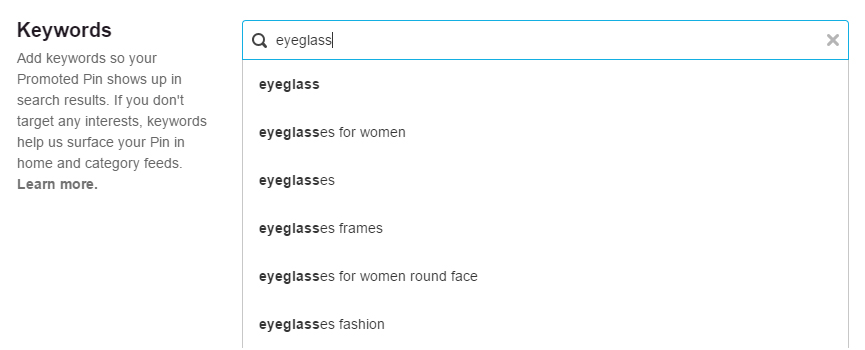
Pinterest offers ad targeting using keywords, such as this example with eyeglasses.
2. Use Twitter for Leads and to Target Competitor’s Customers
Monitoring social media for mentions of your business’s name is helpful. But social listening can also help find prospects, folks looking for solutions that your company provides. As an example, most social listening platforms use queries or search terms along with Boolean operators to return relevant results. That process can also be used for phrases related to consumers seeking help or advice.

This Twitter user is looking for a framing business.
Using the example above, a framing business could see the user’s question and offer assistance. In fact, social selling is best executed when responding to questions or discussions. The interaction should be genuinely helpful. Otherwise, it could backfire and turn off prospects, the opposite of your desired outcome.
Not only can social media listening help generate leads, but it can also snag your competitor’s customers. Nestlé’s Nescafé Dolce Gusto, for example, uses Twitter to engage with customers from its competition, Keurig. Dolce Gusto monitors mentions of Keurig and offers free Nescafé Dolce Gusto machines as replacements, when appropriate.

This consumer, on Twitter, mentions a broken Keurig machine. Dolce Gusto, a Keurig competitor, offered to replace it.
Consumers often share their satisfaction of their new products, further amplifying the reach of potential new customers, as in the Nestlé’s Nescafé Dolce Gusto example, below.
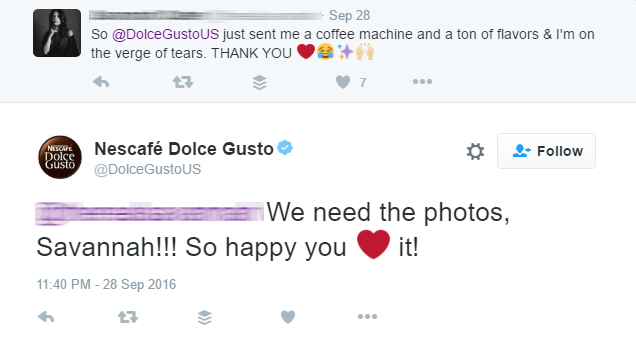
This consumer shared her enthusiasm for her new Nescafé Dolce Gusto coffee machine.
3. Host Giveaways on Instagram
Hosting giveaways via Instagram can be helpful for engaging your current customers by encouraging them to tag and repost the giveaway to their friends. This can help merchants reach new prospects.
Tag a friend. Tagging a friend to enter a giveaway is a simple method for your existing followers to extend your business’s reach.
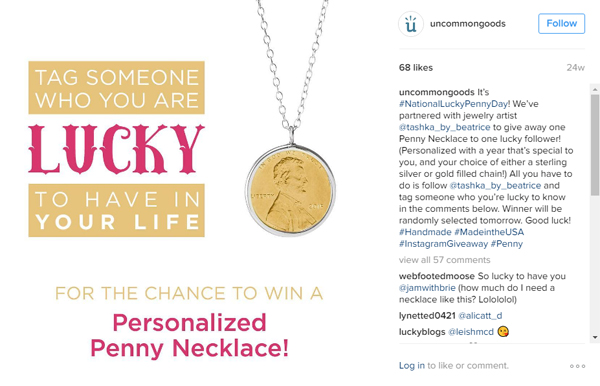
Uncommon Goods uses this tagging method for Instagram users to enter a giveaway.
Repost as an entry. Consider having your followers repost your Instagram image as a method of entering the giveaway. This method is popular as it can have much more reach versus tagging a friend.
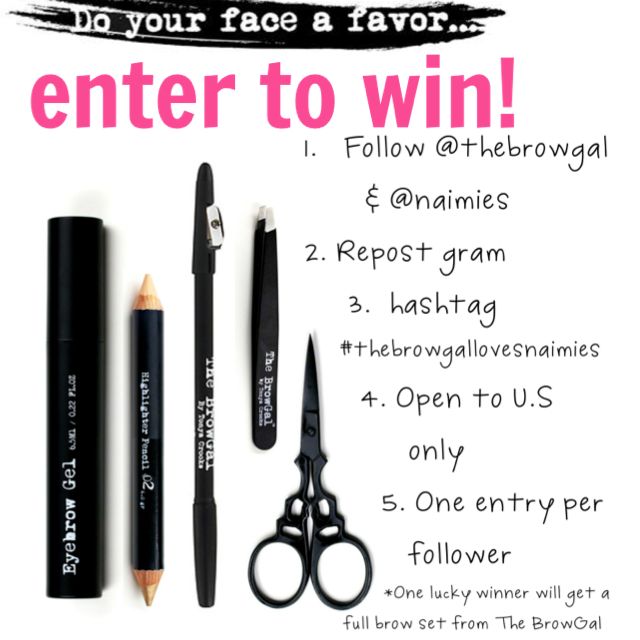
The Brow Gal uses the repost method to enter Instagram’s users in its giveaway.




